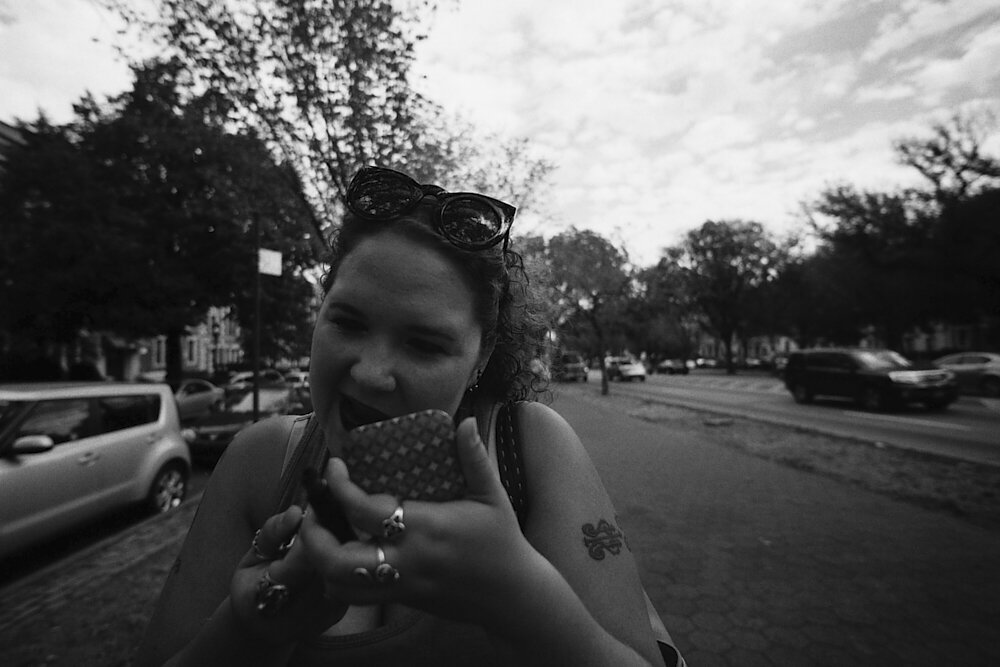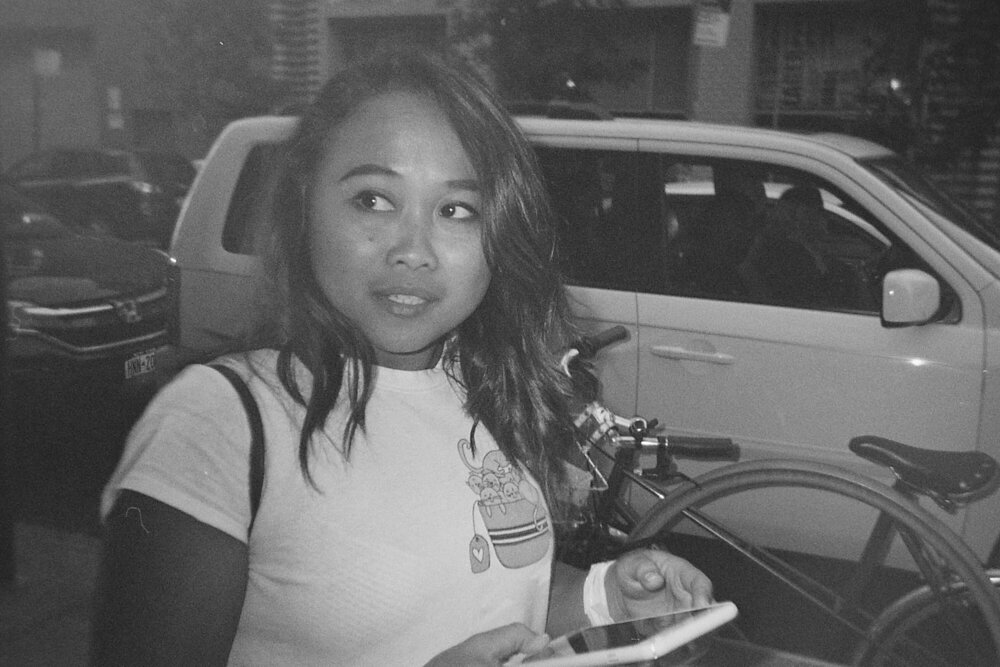What Ilford Film is Best for Street Photography?
Common Ilford Films Used for Street Photography
Ilford’s 400 ISO films that really shine for street photography are Ilford Delta 400, Ilford HP5, and Ilford XP2. All of them have different looks that we’ll cover momentarily. Both films come in both 35mm and 120, but we expect that most street photographers will be loading their Leicas up with 35mm film. The wonderful thing about many of these films is that they’re very versatile. In the hands of the right photographer and one who knows how to use a flash at the necessary times, Ilford’s film emulsions can do some pretty magical things. In the hands of the right developer, they’re also very capable.
The Delta Series

I know that this section is called the Delta series, but we’re going to mostly focus on Delta 400. There are indeed other Ilford Delta films, but let’s talk more about Ilford Delta 400. This film has a finer grain than Kodak Tri-X and arguably is more contrasty. You’ll get less details in the midtones and as I speak about it, it seems like it’s similar to Kodak T-Max 400. But indeed, it really isn’t a film that uses T grain. Street photographers will still like the very contrasty look of Ilford Delta 400. Considering that there are various emulsions, I probably wouldn’t try pushing or pulling the film all that much. For what it’s worth, the film likes a fair amount of light. So I’d shoot it between ISO 400 and in low light without flash with +1 exposure compensation.
One alternative that I think is worth talking about though is Ilford Delta 3200. Ilford recommends that you expose this film at ISO 1600 though. So street photographers can easily go around at night shooting scenes in cities with this film. You’re surely going to get a heck of a lot of grain, but in the right situations that can be easily embraced.
Ilford HP5

Ilford HP5 is a pretty beautiful film, but it’s personally not my favorite. I wouldn’t describe is as contrasty but instead more of a classic look. Some photographers may genuinely enjoy that, but I’m a photographer prefers my blacks to be inky and my whites to be pure. I never really feel like I got that with Ilford HP5. To be quite honest, I’m positive that most street photographers would really enjoy Ilford HP5. What makes Ilford HP5 so popular for street photography is its wide exposure latitude. It’s tough to screw it up and so it’s often recommended for journalism, sports, etc. Yes, you heard me–sports! If you’re shooting a wedding, I recommend using Ilford HP5.
What’s really nice is that Ilford HP5 not only can be loaded up into your camera, but it can be used with the Ilford disposable cameras available for sale. So in case you want to give it a try, this is a great way to do it.
Ilford XP2 SUPER

To me, Ilford XP2 could be my personal favorite film for street photography. I first tried Ilford XP2 when I started photographing using Ilford’s disposable cameras. Like the Delta series, XP2 likes light. I really admire it and the results that come when using it with their disposable cameras. I truthfully encourage using the flash fairly liberally too. I don’t want to say that Ilford XP2 is very contrasty, but what makes it so incredibly special is that you can expose scenes between ISO 50 and ISO 800 on the same roll and get solid results. For that reason, it’s great for photographers that want to get into film and want something very forgiving. When I describe it that way, it’s hard to not think about Kodak Tri-X. But Ilford XP2 Super I feel has a cleaner look than Tri-X does. If you value that over the grainy, gritty look that Tri-x affords, then reach for it.
You seriously can’t go wrong with Ilford XP2 Super.
Ease of Development

For photographers that love to develop film themselves to save money, you’ll want to reach for Delta 400 or HP5. Ilford has its own lineup of really good developer fluids that when followed using their directions, yield great results. But for photographers that don’t like the development process or that simply don’t have the time, I’d recommend going for Ilford XP2 Super. Black and white film always takes longer to develop whenever I drop it off to local labs. But if you’re doing that, you should know that Ilford XP2 Super can be developed C41. So that means you can take it into any Duane Reade, Walgreens, etc. However, I still recommend using small labs. They’re pretty easy to work with.
Scanning

All of these films are pretty simple to scan. I’ve scanned all three with a variety of scanners from Epson and even a cheap Wolverine scanner that you’re bound to find on Amazon. The only film that can prove difficult to scan though is Ilford XP2 Super as you can make various different types of exposures on the same roll. This will mean that each scan needs to be done differently to get the details according to how you shot it.
